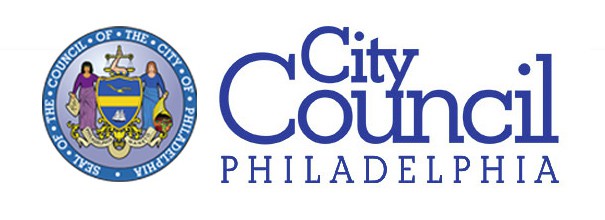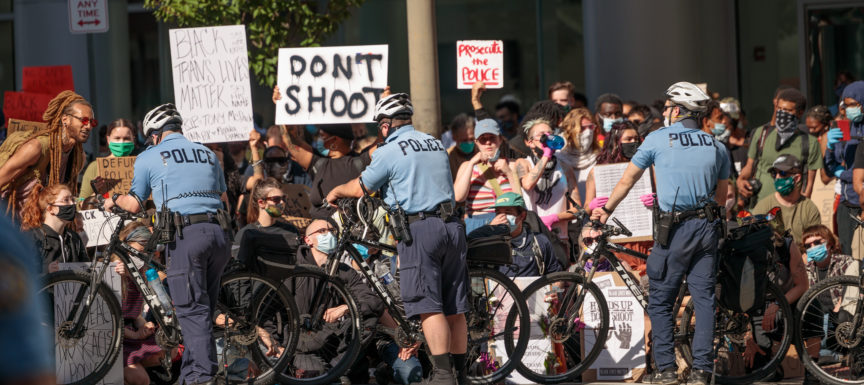PHILADELPHIA — Today, City Council’s Public Safety Committee unanimously advanced legislation that would ban police use of less lethal munitions in response to demonstrations and other first amendment activity, introduced by City Councilmember Helen Gym (At Large). In addition to residents and demonstrators, the committee heard testimony from national experts on police reform, who affirmed the need for public input into the process of reform, local investigators hired by the City to review the police response to demonstrations last summer, and City officials. The legislation is co-sponsored by every member of the Public Safety Committee, and now heads to a vote by the full City Council.
Tear gas was first banned in warfare at the Geneva Convention after World War II, and banned by the United Nations in 1993. The Center for Disease Control warns that lasting exposure to tear gas can cause glaucoma, blindness, burns to the lungs, and repository failure resulting in death. In response to Black Lives Matter demonstrations in Philadelphia, police deployed tear gas for the first time in over 30 years, firing it at protesters cornered on the side of I-676 and at both residents and demonstrators in West Philadelphia, where the gas also entered nearby homes forcing families to flee.
Philadelphia doctors told the committee of the harm tear gas caused patients, and residents and demonstrators recounted their injuries and lasting trauma largely inflicted by police using tear gas, rubber bullets and pepper spray. Human and civil rights lawyers expressed their intention to file a complaint with the United Nations, calling for an investigation into Philadelphia police use of tear gas. Residents demanded a new model for public safety to rebuild trust in communities like West Philadelphia, where residents live with the legacy of the 1985 MOVE bombing, and where relationships with police have historically been fractured.
“We chose a public process of listening, of truth telling, of accountability, driven by the voices and experiences of the people we serve,” said Councilmember Gym. “In banning the police use of less lethal munitions in response to demonstrations, we are answering the calls of our constituents. This is a moment where repairing trust between our residents, public officials, and police is essential. Residential neighborhoods are not warzones. Demonstrators are not enemy combatants. This is a first step in working with our communities to build a new model for public safety that is driven by their needs and their vision for the future.”
Lawyers cited a report from Amnesty International, which studied police violence in 40 states in response to Black Lives Matter demonstrations including the events in Philadelphia. The report found evidence to suggest police in Philadelphia used tear gas and other less lethal munitions punitively. It quoted the UN Special Rapporteur on torture, who has argued that tear gas constitutes torture when used “intentionally and purposefully to inflict pain or suffering on a powerless person,” such as when it’s fired directly at an individual or used in a confined space – as Philadelphians reported last summer.
Amnesty concluded that “tear gas should never be used against peaceful or largely peaceful public assemblies,” and “should only be used in situations of generalized violence for the purpose of dispersing a crowd when all other means have failed.”
“At the end of the month, we will be filing a complaint with the United Nations urging them to investigate this police brutality,” said Rachel Lopez, a lawyer specializing in international human rights law who, along with the ACLU, represents residents hit with less lethal munitions during demonstrations last summer. “Because of the nature of tear gas, it often has indiscriminate effects, meaning it can easily hit bystanders due to changes in wind direction and cause stampedes, just as it did on I-676. Tear gas is so dangerous that it is considered a chemical weapon under international law and banned in war.”
“The PPD policies as written are woefully inadequate to address these abuses,” Lopez continued. “While Philadelphia Police Directive 10.2 specifies that pepper spray should not be deployed in situations where people are peacefully exercising their Constitutional rights of free speech or assembly, it not does include a similar prohibition for tear gas or rubber bullets.”
City Council’s Public Safety committee heard testimony from Lynda Garcia, director of the Policing Campaign at The Leadership Conference, a coalition of more than 220 national organizations working to promote and protect civil and human rights. In her testimony, she urged Council to pass the legislation:
“By implementing policies to ensure that all people’s constitutional rights are respected, including the recommendations offered here, we can begin to create a new era of public safety that respects the dignity and humanity of all people,” Garcia said. “Importantly, a new paradigm of public safety should not just change policing policies and practices. Local leaders must engage and work with communities to develop solutions to social and public health challenges and to shrink the footprint of the criminal legal system — including police — in Black and Brown people’s lives.”
“The response from police during these protests pushed a further wedge between police and the citizens they serve,” said Monica Allison, a West Philadelphia resident and co-founder of Cobbs Creek Neighbors. “And let’s be clear, the job of police is not just law enforcement, but it is also about service to the community. Philadelphia is the cradle of democracy and as such we should be able to uphold the rights of its citizenry as well as enforce the law. It is my hope, and the hope of the residents of West Philadelphia, that police are held accountable for actions that further damage the very fabric of this city, and this legislation is one step in the right direction.”
Joseph Nwadiuko, a physician and health policy researcher at the University of Pennsylvania, cited research that found rubber bullets cause “severe injury” 91 percent of the time that they impact the torso or head. He described the dire health risks of tear gas:
“Patients can sustain substantial skin burns and dangerous blood pressure elevations,” Nwadiuko said. “Tear gas can cause permanent eye damage leading to glaucoma and blindness. Airways can swell shut causing patients to have life-threatening respiratory distress; other patients have been known to sustain liver damage, requiring acute medical attention. Swelling of the lungs themselves is a side effect, known to lead to intensive care admissions. Worse still are the effects if these chemicals reach people that already have comorbidities. If patients already have asthma, as 19 percent of Philadelphians do, they can provoke a dangerous asthma attack; if patients already have high blood pressure, which nearly half of Black Philadelphians do, they can provoke serious cardiac and brain injury.”
“Our own Centers for Disease Control and Prevention has warned that tear gas can blind or kill people through chemical burns and respiratory failure. Just this year prisoners in the US with respiratory conditions have died after inhaling tear gas in poorly ventilated areas,” said Elizabeth Bhoj, a pediatrician at Children’s Hospital of Philadelphia who treated teargas victims in her West Philadelphia neighborhood. “Sociology studies have shown that the use of ‘less than lethal’ ammunition is more likely to escalate violence and lead to truly lethal force. It is also clear to anyone with either personal experience, or even a glancing familiarity with the data, that the physical and psychological effects of ‘less than lethal’ weapons are clearly significant for the sensitive developing brains and lungs of children and babies.”
###
Photo: Rob Bulmahn, used under Creative Commons license.


